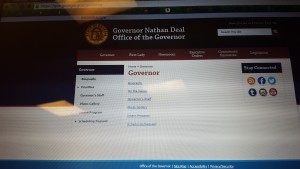
Bowman, Jen. “Luxury Homes in Historic Druid Hills – Springdale Rd.” ActiveRain. N.p., 23 July 2009. Web. 13 Feb. 2016.

Givens, Darin. “Tuba Christmas at Underground Atlanta.” ATL Urbanist. N.p., 8 Dec. 2012. Web. 2 Apr. 2016.
Throughout my journey in this class, I got to explore and learn more about Atlanta as I visited and observed the interior and exterior environments I choose for my projects. The exterior environment I choose to observe is the Druid Hills neighborhood located in DeKalb County while my interior environment was Underground Atlanta that’s located in the heart of downtown Atlanta. Although these two environments are different, hey do have some similarities. The similarities and differences I will discuss are how they impact the city if Atlanta economically, the community, and in the future.
The Druid Hills neighborhood is one of the oldest prehistoric communities in Atlanta. As I observed and walked through this community I noticed it offered a variety of artifacts such as the prehistoric Druid Hills that is located on Pounce de Leon. The traffic throughout this neighborhood is horrendous. However, the Underground Atlanta district is a historic landmark that has undergone various restorations and renovations and has horrendous traffic throughout due to visitors and travelers. Both of these environments are rich in history and have undergone went various changes throughout the years. These environments impact the communities of Atlanta due to the infrastructures and shopping and entertainment they offer within their area.
The Druid Hills community and the Underground Atlanta district offer a lot towards the Atlanta economy to impact it. Although, the Druid Hills community is portrayed as a wealthy and middle-upper class neighborhood the infrastructures this place has to offer play a vital role to the economy such as Emory University and Emory Hospital being located in the northeast side of the Druid Hills community. While the Underground Atlanta district hosts various events during the holidays that attracts visitors and locals. A big and well-known event that Underground Atlanta hosts every year is The Peach Drop, which is a Downtown Atlanta traditional New Year’s Eve event. These two environments help drive the economy of Atlanta by bringing in monetary value.
As the future nears, I believe the Druid Hills community will continue ti thrive and expand due to the tremendous number of artifacts that lies within this community. Also, due to classes of society that live throughout The Druid Hills community will continue to impact it and help it thrive as a great community in the future. While the Underground Atlanta district may not be able to thrive and remain as a historic landmark in the future due to the city of Atlanta officials considering removing Underground Atlanta due to the drop of business it has experienced over the years. Whether these two environments continue to thrive or not in the near future, I believe they still will have an impact because they are a part of Atlanta’s history, especially Underground Atlanta.
As you have read, The Druid Hills community and Underground Atlanta built environments are great places to visit to learn about the history of Atlanta and see various historic artifacts and renovated infrastructures that help these communities thrive as a whole. Despite, their differences these two environments will continue to impact the community of Atlanta, economy, and thrive in the near future.










